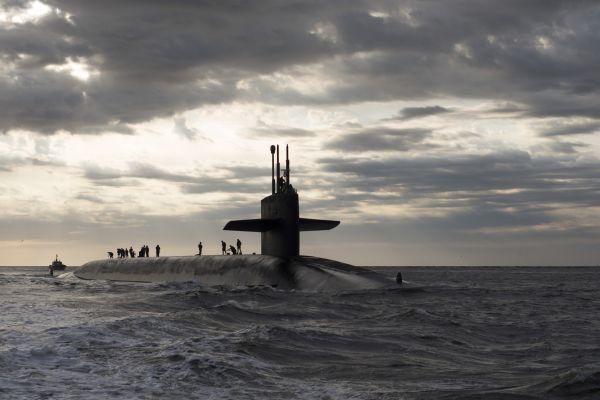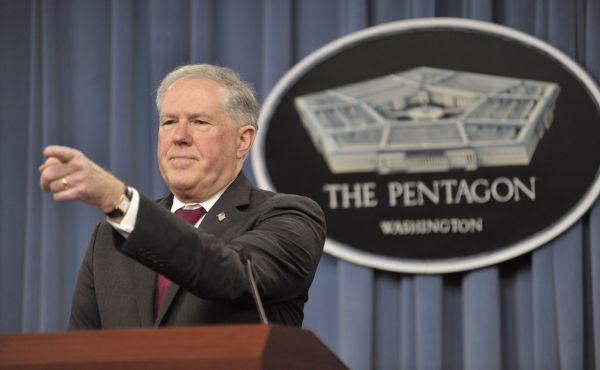U.S. Navy’s Superior Supplier Incentive Program Being Extended to All Services For Acquisition
The Defense Department unveiled a first-of-its-kind program that acquisition leaders say will promote better competition, help control program costs and achieve affordable programs; and could lead to an overhaul of the government's Better Buying Power acquisition process.
The nascent Defense Department-wide measure is based on a year-long U.S. Navy pilot program it called the Superior Supplier Incentive Program (SSIP), tantamount to a listing of its top-performing defense business units with consistent histories of good performance. Last week, the Navy released the list. The top tier included defense giants General Dynamics, General Electric Aviation, Lockheed Martin, Northrop Grumman, Raytheon and Rolls-Royce.
"An industry best practice is to recognize your best suppliers and to strengthen your relationship with those suppliers," Sean Stackley, assistant secretary of the Navy for research, development and acquisition, says of the theory behind the program.
Launched in 2010, the Better Buying Power (BBP) program aimed to reform defense acquisition from within, reign in out-of-control program cost hikes, eliminate bureaucracy and single-bidder contracts and promote competition by incentivizing services.
Listing superior suppliers aims to stimulate those companies that did not make the list to try to break into the list. “I think we’ll see this list shift around,” says Frank Kendall III, under secretary of defense for acquisition, technology and logistics, referring to the Navy’s superior suppliers. Thirty business units from nine companies make up the complete SSIP list, divided into three tiers. “I think people will respond. I think the people that will respond the most are the people in the bottom tier, frankly. People that want to get out of that tier, and that’s exactly the kind of behavior we want to see from people.”
Kendall on Friday released a new report on the state of the Defense Department’s acquisition system. "The news that’s not quite as encouraging is we don't always employ … incentives as effectively as we could. And in some cases, they’re not effective at all," Kendall says of the report. "In other cases, they even appear to be counterproductive. So we've got to look at that carefully and try to do better there. So there’s some good lessons learned there, and in some other areas. We’re also reporting more than we have in the past in this year’s edition on the profitability of industry and how industry is making profits and the relationship between that and the work that they’re doing, which is I think important for industry to understand. It’s certainly important for us to understand, so we can align profitability with the performance that we want.”
The Navy used its existing contractor performance and appraisal review system (CPARS) to determine which companies made the SSIP list.
In addition to addressing industry, government officials too are petitioning Congress for solutions, says Kendall, who plans to ask lawmakers to quash sequestration. "First and foremost [a solution] is to get rid of sequestration," Kendall says. "The thing that is hampering our efforts to improve efficiency right now is the uncertainty about future budgets. And that’s driven by the threat of sequestration. So that would be enormously helpful."
Stackley says, "Rather than us roll out, 'Here’s exactly what we think is a good incentive for you,' we want to engage in a true dialogue with the companies over what makes a difference to them. What is that we do that drives cost into their programs or their systems or their processes so that we can back that off and by backing that off help reduce their cost, which should return profit to them. So rather than us dictate, let’s have the discussion to figure out what makes a difference."
Industry and government leaders can further the discussion August 5 and 6 at the Defense Acquisition Modernization Symposium in Washington, D.C., at which participants will explore how to forge the best relationship between the government and industry to improve the acquisition process. The AFCEA International-sponsored “Better Buying Power” symposium fosters engagement, hands-on workshops and interactive panel sessions to finding that healthy relationship between industry and government.
"It’s important in this time of reduced resources, in addition to our government drawdown from the long war we've had, … for us to get this acquisition process right, for industry to understand it as well as government to get the right solution," says Mike Warlick, vice president of Defense Operations for AFCEA. “We tried to put together a program that is interactive for the attendee. We want the attendee to be a participant in this process."
AFCEA established the forum to bring together industry, government and academia. "It's going to take a team of all three of those organizations to make a successful event," Warlick says.






Comments